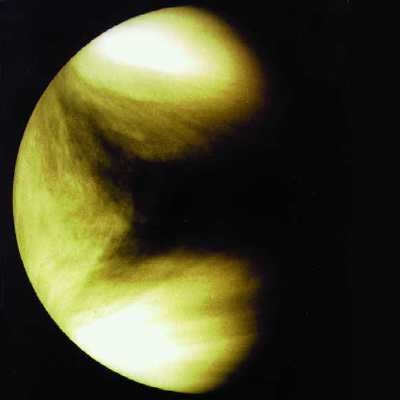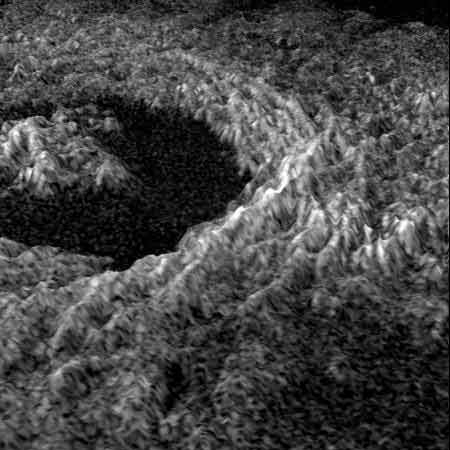August 6, 2003
Venus
Of similar size and mass to Earth, Venus is sometimes considered its sister. The similarity stops there, however, and little is known about the evolutionary processes that created this peculiar planet.
Second planet from the Sun, Venus is also the hottest in the solar system with its exaggerated greenhouse effect creating mean surface temperatures of 480°C.

Its carbon dioxide-rich atmosphere is so thick that atmospheric pressure is 90 times that on Earth. Droplets of water and sulphuric acid form layers of mist and cloud 30 to 70 kilometres above the surface, concealing everything below.

Venus rotates very slowly, probably because it has no magnetic field, and in the opposite direction to most planets. Its atmosphere revolves 70 times faster than its surface, creating equatorial winds in excess of 300 kilometres per hour.
|
Last updated: May 2003
More about...
More information
Solar System Guide, University of Texas McDonald Observatory
Venus Fact Sheet, National Space Science Data Center (NASA)
VENUS EXPRESS mission, ESA website
Solar System exploration, NASA website
Planetary photojournal - NASA website
CNES Youth/Education site
Educnet: new information and communication technologies in teaching
Venus Fact Sheet, National Space Science Data Center (NASA)
VENUS EXPRESS mission, ESA website
Solar System exploration, NASA website
Planetary photojournal - NASA website
CNES Youth/Education site
Educnet: new information and communication technologies in teaching